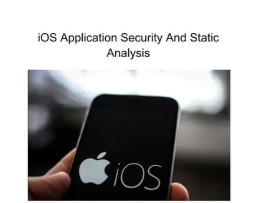The Function of IOSs Cybersecurity: Safeguarding Information in a Complex Digital Landscape
In today’s interconnected world, cybersecurity has become an indispensable part of our digital ecosystem. With the explosive growth of the Internet of Things (IoT), cloud computing, and big data, the need for robust protection mechanisms has never been more critical, particularly within Information and Operational Technology Systems (IOSs). This blog explores the function of IOSs cybersecurity, its importance, and key strategies employed to secure these systems against an array of cyber threats.
Understanding IOSs Cybersecurity
Information and Operational Technology Systems (IOSs) encompass a broad range of technologies that gather, store, process, and transmit data related to operations and critical information infrastructure. These systems include everything from control systems in industrial settings to data management systems in large enterprises.
Given the sensitive nature of the information they handle and the potential consequences of cyberattacks (ranging from financial loss to public safety concerns), securing these systems is of paramount importance. Cybersecurity for IOSs involves applying protective measures to safeguard these systems from unauthorized access, data breaches, and operational disruptions.
Core Functions of IOSs Cybersecurity
1. Risk Assessment and Management
At the heart of IOSs cybersecurity lies a thorough understanding of risk assessment and management. This involves identifying vulnerabilities within the systems, evaluating potential threats, and assessing the likely impact of various cyber incidents. By conducting regular risk assessments, organizations can prioritize their cybersecurity efforts and allocate resources effectively to mitigate significant risks.
2. Access Control
Implementing stringent access control measures is vital for safeguarding IOSs. This includes establishing user permissions, employing multi-factor authentication, and ensuring that only authorized personnel can access sensitive systems and information. By enforcing strict access policies, organizations can reduce the likelihood of unauthorized access and potential data breaches.
3. Network Security
Cybersecurity measures must protect the entire network that supports the IOSs. Firewalls, Intrusion Detection Systems (IDS), and Intrusion Prevention Systems (IPS) play a crucial role in monitoring network traffic for suspicious activity and preventing unauthorized access. Robust network security protocols ensure that only legitimate communications occur between devices within the system.
4. Data Protection
Data is one of the most valuable assets in any organization, and protecting it is a key function of IOSs cybersecurity. This involves employing encryption techniques, data masking, and regular backups to protect sensitive information from theft or loss. Moreover, organizations must ensure compliance with data protection regulations, such as the GDPR or HIPAA, which govern how data should be collected, stored, and processed.
5. Incident Response and Recovery
Even with the best preventive measures in place, cyber incidents can still occur. IOSs cybersecurity involves crafting a robust incident response plan that outlines procedures for detecting, responding to, and recovering from cyberattacks. This plan should include predefined roles and responsibilities, communication protocols, and steps for mitigating damage. Post-incident, organizations must conduct thorough investigations to understand the attack vectors and strengthen defenses against future breaches.
6. Security Awareness Training
Human error remains a leading cause of security breaches, making employee education and security awareness training vital components of IOSs cybersecurity. Organizations must regularly train their teams to detect phishing attempts, recognize suspicious activities, and adhere to security best practices. By fostering a culture of security awareness, organizations can empower employees to act as the first line of defense against cyber threats.
7. Continuous Monitoring and Improvement
IOSs cybersecurity is not a one-time effort but rather an ongoing process. Continuous monitoring of systems, networks, and user activities ensures that organizations can detect anomalies or potential threats in real-time. Regular audits, penetration testing, and vulnerability assessments are essential for identifying weaknesses and improving security measures over time.
Conclusion
As digital threats continue to evolve, the role of IOSs cybersecurity becomes increasingly crucial in safeguarding the integrity and functionality of information and operational technology systems. By implementing a multi-layered approach encompassing risk management, access control, network security, data protection, incident response, training, and continuous monitoring, organizations can effectively protect their critical assets against cyber threats.
In conclusion, the future of cybersecurity lies in adopting a comprehensive strategy that not only defends against current threats but also anticipates and adapts to emerging challenges. With the right approach, organizations can ensure that their IOSs remain robust, resilient, and secure in the face of an ever-changing digital landscape.
